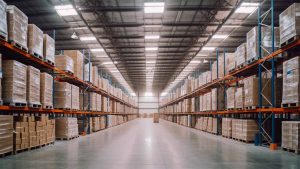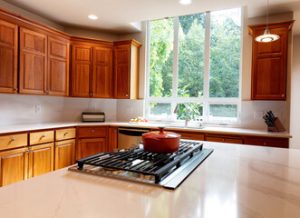Managing products beyond a company’s walls is never just about storage. It is a strategic choice that shapes costs, performance, and long-term scalability. Third-party logistics warehouses have become the invisible backbone of commerce, yet many underestimate the complexity behind their pricing. Every square meter, every movement of goods, and every data update carries a price tag that goes deeper than simple rent.

At the core of 3PL warehouse costs lies space, but it is never a flat figure. The amount you pay is influenced by how much room your inventory consumes, how quickly it rotates, and how seasonality affects volume. Businesses often face fluctuating bills because storage fees adjust as demand changes over time. A slow-moving product line, for example, quietly increases warehouse costs, while fast-moving items might reduce them through higher turnover efficiency. Keep reading the article below to learn more about 3PL Warehouse Cost.
Beyond physical storage, handling costs shape a significant part of the bill. Every pallet unloaded, every box picked, and every order assembled represents labor, equipment, and technology investment. These are not static charges but vary depending on the complexity of operations. Customized packing, labeling, or special handling requirements add layers of cost that many businesses fail to forecast.
Receiving inventory is another cost driver that often flies under the radar. When goods arrive, they need to be counted, inspected, documented, and placed into storage, all requiring workforce time and system updates. Some 3PL providers charge by the hour, while others bill per unit received, which can change the economics dramatically. The more fragmented the shipments, the higher the processing cost becomes.
Order fulfillment also carries weight in the total cost equation. Picking, packing, and preparing items for dispatch demand both precision and speed, which translate directly into operational expenses. High order volume can push costs down per unit, but sudden spikes can lead to overtime charges or additional staffing fees. Predicting order patterns helps mitigate surprises in monthly invoices.
Then there are the outbound costs, often tied to shipping preparation and dispatch coordination. While transportation might be billed separately, the labor and systems required to manage it are embedded in warehouse costs. Integrations with carriers, printing documentation, and coordinating pickups all require resources. Businesses that underestimate these components often face unexpected budget overruns.
Technology has become another hidden layer in warehouse pricing. Modern 3PL facilities rely on inventory management systems, real-time tracking platforms, and automation tools. While these improve accuracy and speed, they are not free. Subscription fees, data integration charges, or custom dashboard solutions may appear as additional costs in the service contract.
Peak season surcharges can also surprise those unfamiliar with 3PL billing models. During high-demand periods, warehouses often raise rates to cover increased labor, equipment, and operational complexity. Storage prices can climb due to tighter space availability, while handling costs may rise because of overtime. Strategic planning and forecasting are essential to avoid budget shocks during these periods.
Value-added services expand the price structure even further. From quality inspections to repackaging, kitting, or returns processing, each task requires specialized labor and time. These services often operate on a separate fee schedule that scales with volume or complexity. Companies that underestimate their need for such services risk unexpected bills at the end of the month.
Returns handling, a growing component in modern logistics, adds yet another layer of cost. Processing returned items involves inspection, restocking, or disposal, all of which consume time and space. Reverse logistics is often more labor-intensive than outbound fulfillment, and charges can quickly accumulate. Businesses with high return rates need to factor this into their overall cost analysis.
Contract structure plays a decisive role in total expenses. Some 3PL providers offer pay-as-you-go pricing, while others require minimum monthly commitments. Volume-based discounts might seem attractive, but they can also lock companies into higher costs if demand fluctuates. Careful negotiation and forecasting are key to balancing flexibility with predictable expenses.
Location has an indirect but powerful impact on warehouse costs. Facilities near major transportation hubs often charge more due to strategic advantages. Yet these higher costs might be offset by lower shipping expenses and faster delivery times. The optimal balance between storage price and logistical efficiency depends on a company’s supply chain design.
Labor market conditions can also sway 3PL pricing. Warehouses operating in areas with high labor costs must charge more to remain profitable. Fluctuations in wage rates, labor availability, and regulatory requirements all influence service fees. As automation reduces some labor costs, new expenses tied to technology maintenance may emerge.
Customization adds a premium to warehouse costs that many overlook. Tailored reporting, custom packaging, or branded fulfillment experiences require dedicated workflows. While these add value to the customer experience, they also increase complexity and expense. Weighing the return on investment for each customized service is essential before committing.
Scalability, while a major advantage of outsourcing, also influences costs. Expanding operations during growth phases might involve onboarding fees, integration charges, or higher-tier service plans. Similarly, scaling down might not immediately reduce costs due to contractual obligations or minimum space requirements. Long-term planning should include both expansion and contraction scenarios.
Transparency in pricing is another critical element often underestimated. Some 3PL agreements appear cost-effective upfront but hide numerous variable charges in the fine print. Administrative fees, system access costs, and even paper invoice charges can inflate the total bill. Businesses should demand detailed cost breakdowns to avoid hidden expenses.
Data analytics and reporting, once optional, are now part of the standard 3PL service portfolio. Yet detailed insights often come at a premium, especially if custom dashboards or advanced forecasting tools are required. These analytics can drive better decision-making, but they must be weighed against their cost. Investing in actionable data should be aligned with operational goals.
Sustainability initiatives are another emerging factor influencing warehouse costs. Energy-efficient facilities, eco-friendly packaging, and carbon offset programs can all raise service fees. However, they may also offer long-term savings and reputational benefits. Companies must decide whether sustainability costs are an investment in brand equity or a luxury they can forgo.
Insurance and liability coverage also shape the financial picture. Many 3PL contracts include basic coverage, but extended protection for high-value goods often costs extra. Understanding the risk profile of stored inventory is essential to avoid underinsuring or overspending. Balancing safety and cost requires careful assessment of product type and value.
The length of the partnership itself affects pricing over time. Long-term agreements can secure better rates but may limit flexibility. Short-term contracts offer agility but often come with higher per-unit costs. Strategic alignment between business cycles and contract terms can significantly improve cost efficiency.
Ultimately, the real price of a 3PL warehouse is not found in a single figure. It is a dynamic combination of space, labor, technology, services, and strategic choices. Companies that treat warehousing as a transactional cost miss opportunities to optimize and innovate. Those that see it as a strategic investment can unlock savings, efficiency, and growth potential.
Understanding these layered costs transforms warehousing from a fixed expense into a strategic tool. It allows businesses to make informed decisions about inventory strategy, customer experience, and long-term scalability. The more transparent and intentional the approach, the more predictable and manageable the costs become. In the evolving landscape of logistics, knowledge is not just power—it is profit.
